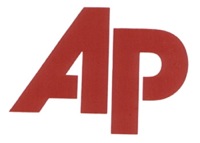 Earlier today, the Associated Press announced that it will be expanding its project to distribute content from nonprofit news outfits to newspapers. The project originated last year with partnerships the cooperative — itself a nonprofit — had developed with the public-interest news providers ProPublica, the Center for Public Integrity, the Center for Investigative Reporting, and the Investigative Reporting Workshop. Those partnerships were built in hopes of a win-win scenario: wider content distribution for the nonprofits, and more high-quality content for papers. Today’s announcement doubles down on the project’s implied institutionalization of an ecosystem that promotes collaboration between nonprofit and for-profit news sources. (Though the announcement specifies that the AP will be working with the Maynard Institute in its new system, it doesn’t name any other partners, signed or potential.)*
Earlier today, the Associated Press announced that it will be expanding its project to distribute content from nonprofit news outfits to newspapers. The project originated last year with partnerships the cooperative — itself a nonprofit — had developed with the public-interest news providers ProPublica, the Center for Public Integrity, the Center for Investigative Reporting, and the Investigative Reporting Workshop. Those partnerships were built in hopes of a win-win scenario: wider content distribution for the nonprofits, and more high-quality content for papers. Today’s announcement doubles down on the project’s implied institutionalization of an ecosystem that promotes collaboration between nonprofit and for-profit news sources. (Though the announcement specifies that the AP will be working with the Maynard Institute in its new system, it doesn’t name any other partners, signed or potential.)*
Expansion-of-an-existing-project isn’t always big news, of course, but it’s worth noting in this case because the AP’s nonprofit-distribution effort has been an undertaking that, as our Laura McGann noted in February, was less pathbreaking than participants had hoped it would be when it was first announced — largely because the nonprofits’ content (most of it, anyway) simply wasn’t picked up by newspapers.
“We wish it had gone better,” Bill Buzenberg, executive director of the Center for Public Integrity, told the Lab after the project’s six-month beta period. John Raess, AP’s San Francisco bureau chief (and one of the project’s leads), acknowledged the same thing his partners did: that the project had been, at that point, “not as hugely successful as we’d like.” And Sue Cross, the AP’s senior vice president for global new media and US media markets (and the executive who launched the project), noted that there’d been no talk of expanding it.
So today’s announcement of an expansion is not just news, but also, potentially, good news — both for nonprofit outlets and the consumers who stand to benefit from the public-interest reporting they do.
“It’s been very low-key because we’ve been taking it slowly,” says Kate Butler, the AP’s vice president for U.S. newspaper markets — a rollout that’s been both experimental and intentional. “We wanted to start small, see what the issues were — and see what worked,” she told me. And a big part of that came down to solving — or, at least, improving — a logistical problem Laura noted in February: the delivery platform AP uses to share the stories themselves. The AP has been engaged in an org-wide effort to transition its members from its satellite wire to its web-based AP Exchange — a process that, save for a few stragglers, was pretty much completed as of this March, John Raess told me.
During the project’s beta, Butler notes, the AP had been using AP Exchange as its web portal. To find content — including the content from nonprofits — editors would log into the Exchange system and actively search for stories. But the expanded partnership with nonprofits will make use of the AP WebFeeds technology, which includes metadata for stories and allows for easier searching and sorting of those stories — and, crucially, allows content to flow directly into papers’ content management systems.
Essentially, the cooperative has traded push notifications for pull in distributing nonprofit-produced news content to papers. The new system, Butler says, “removes a step and makes it easier for the content to be seen.”
The nonprofit stories are opt-in for news publishers — sent to your CMS only if you want them to be — but it’s hard to imagine a scenario in which a paper would turn down exposure to stories that are, ostensibly, both in the public interest and, you know, good. (No money changes hands in the exchange.) Though he declines to specify the particular outfits at this point, Raess has so far talked to around 15 publications, he told me — and “every editor I’ve talked to has said yes.”
*This paragraph has been modified to clarify that the expanded project is launching with a new pool of potential nonprofit partners.